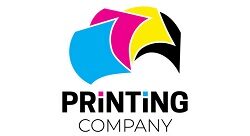Understanding Color Management: A Glossary of Color-related Terms
Introduction
Color management is a crucial aspect of various industries, including design, printing, photography, and digital imaging. It involves the process of ensuring consistent and accurate colors across different devices, such as monitors, printers, and cameras. However, understanding color management can be overwhelming due to the abundance of technical terms and concepts associated with it.
In this blog post, we aim to provide you with a comprehensive glossary of color-related terms that will help you grasp the fundamentals of color management. Whether you are a beginner looking to understand the basics or a professional seeking to improve your color workflow, this glossary will serve as a valuable resource.
1. Color Space
A color space refers to a specific range of colors that can be reproduced by a device or system. It is a three-dimensional model that represents colors in a defined way. Examples of color spaces include RGB (Red, Green, Blue) and CMYK (Cyan, Magenta, Yellow, Black).
2. Gamut
Gamut refers to the range of colors that a particular device or system can reproduce. It is often represented as a subset within a larger color space. Understanding the gamut of your device is crucial for accurate color reproduction.
3. ICC Profile
An ICC (International Color Consortium) profile is a standardized file that describes the color attributes of a device, such as a monitor or printer. It ensures consistent color reproduction across different devices by mapping the device’s color gamut to a standard color space.
4. Calibration
Calibration is the process of adjusting a device to produce accurate and consistent colors. It involves measuring and adjusting the color output to match a desired standard. Regular calibration is essential to maintain color accuracy over time.
5. Color Management System (CMS)
A Color Management System (CMS) is a software or hardware solution that facilitates color management. It ensures consistent color reproduction by translating colors between different devices, such as monitors, printers, and scanners.
6. Rendering Intent
Rendering intent determines how out-of-gamut colors are handled during color conversion. There are four rendering intents: Perceptual, Relative Colorimetric, Absolute Colorimetric, and Saturation. Each intent has a different approach to preserving color accuracy.
7. Dithering
Dithering is a technique used to simulate colors that are outside the gamut of a device. It adds noise or patterns to create the illusion of additional colors. Dithering can help achieve smoother gradients and reduce banding in color transitions.
8. Colorimeter
A colorimeter is a device used to measure and analyze color. It consists of a light sensor and filters that detect color components. Colorimeters are commonly used to calibrate monitors and printers for accurate color reproduction.
9. Spectrophotometer
A spectrophotometer is a more advanced color measurement device that measures color by analyzing the spectral content of light. It provides precise and detailed color information, making it ideal for color-critical applications such as print proofing.
10. Pantone
Pantone is a standardized color matching system used in the printing industry. It provides a universal language for communicating and reproducing colors accurately. Pantone colors are often used for branding and ensuring consistent color reproduction across different media.
Summary
In this blog post, we have compiled a glossary of color-related terms to enhance your understanding of color management. The glossary covers a wide range of terms, including color spaces, color models, color gamut, ICC profiles, color calibration, and more.
By familiarizing yourself with these terms, you will be better equipped to navigate the complexities of color management and achieve consistent and accurate colors in your work. Whether you are a graphic designer, photographer, or involved in any industry where color plays a crucial role, this glossary will serve as an invaluable referenc look at here now So, let’s dive into the fascinating world of color management and expand our knowledge of this essential aspect of visual communication!
Q: What is color management?
A: Color management is the process of ensuring consistent and accurate colors across various devices, such as monitors, printers, and cameras.
Q: Why is color management important?
A: Color management is important because it allows for accurate color representation and ensures that colors look the same regardless of the device used to view or print them.
Q: What is a color profile?
A: A color profile is a set of data that describes the color space, characteristics, and capabilities of a specific device, such as a monitor or printer.
Q: What is color calibration?
A: Color calibration is the process of adjusting and aligning the colors of a device to match a standardized color space, ensuring accurate color reproduction.
Q: What is gamut?
A: Gamut refers to the range of colors that a device or color space can reproduce. A larger gamut means a wider range of colors can be accurately represented.
e.

Welcome to my website! My name is Logan Truscott, and I am a professional Vehicle Wrap Designer with a passion for all things related to printing and design. With years of experience in the industry, I have honed my skills and expertise to provide top-notch services to my clients.
